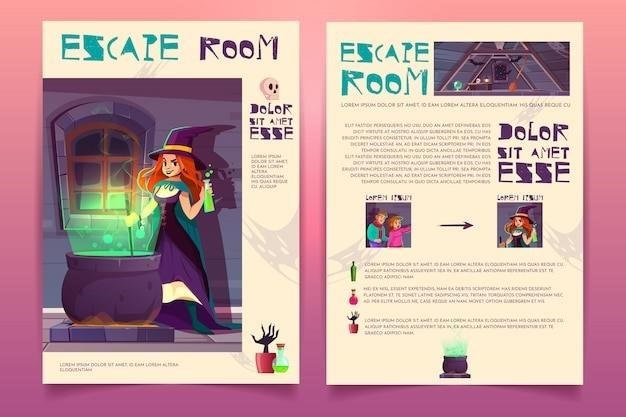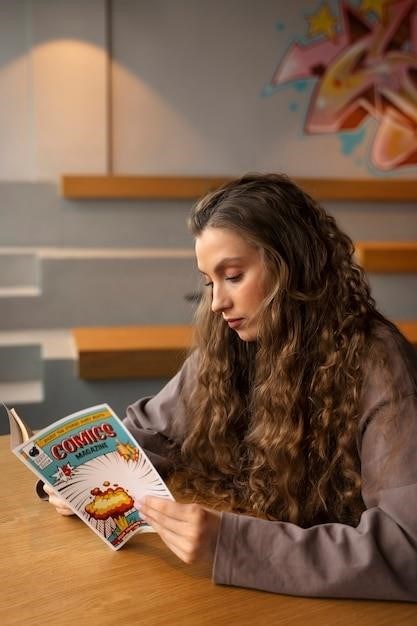Lost Girl Play Script PDF⁚ A Comprehensive Guide
This guide explores various adaptations of the “Lost Girl” play script available in PDF format. Discover plot summaries, character analyses (especially Wendy Darling and Peter Pan), setting details, and critical reception. Learn where to find online resources, licensing information, and related works.

Available Versions and Adaptations
The availability of “Lost Girl” play scripts in PDF format varies. While a definitive, single, universally accessible version doesn’t seem to exist, numerous online mentions suggest multiple adaptations and interpretations of the story. Some versions appear to be geared towards educational use, possibly tailored for student performances with varying cast sizes (from smaller, intimate productions to larger-scale theatrical presentations). The scripts themselves may differ in length, character development, and overall tone. Several online discussions hint at variations in the storyline, suggesting different writers or directors have adapted J.M. Barrie’s original Peter Pan narrative to create unique versions focusing on Wendy’s journey into adulthood and her relationship with Peter Pan. This lack of a standard version makes finding a specific PDF challenging, though fragments and excerpts are scattered across online forums and databases.
Plot Summary and Themes
Many online mentions describe “Lost Girl” as a coming-of-age story centered around Wendy Darling, long after her adventures in Neverland. The play focuses on Wendy’s journey of self-discovery and emotional growth, tackling themes of first love, loss, and the bittersweet transition from childhood to adulthood. Wendy’s desire to reclaim a kiss from Peter Pan serves as a catalyst for her journey, symbolizing her need to confront past relationships and move forward. The setting, often described as Wendy’s nursery, acts as a powerful symbol of her past and the emotional space she needs to navigate. The play explores the complexities of growing up, letting go of childhood fantasies, and accepting the realities of adult life. The open window in the nursery, mentioned in several online reviews, acts as a metaphor for her emotional state, transforming from a symbol of longing to one of closure as the play progresses. The overall tone suggests a blend of nostalgia, wistfulness, and ultimately, hope for the future.

Character Analysis⁚ Wendy Darling and Peter Pan
In “Lost Girl,” Wendy Darling transcends her traditional portrayal as the motherly figure in Neverland. She’s now a young woman grappling with the complexities of adulthood, haunted by her past encounters with Peter Pan. The play delves into her emotional journey, exploring her unresolved feelings towards Peter and the lingering impact of their relationship. While Peter Pan remains a significant figure in her memories, he’s not physically present in the play, instead serving as a catalyst for Wendy’s self-reflection and growth. Online discussions highlight the shift in Wendy’s character; she’s no longer the innocent child, but a protagonist actively shaping her own destiny. This analysis emphasizes her agency and emotional maturity as she confronts her past and strives for a future independent of Peter’s influence. The absence of Peter allows for a deeper exploration of Wendy’s internal conflicts and her journey towards self-acceptance and emotional independence. The character of Peter, therefore, exists primarily as a memory, a pivotal figure in Wendy’s past shaping her present and future, but not actively participating in her present-day journey.
The Setting and Symbolism of the Nursery
The nursery in “Lost Girl” serves as more than just a backdrop; it’s a potent symbol representing Wendy’s internal world and her journey towards adulthood. Confined to this single setting, the play intensifies the focus on Wendy’s emotional transformation. The nursery, a space associated with childhood innocence and fantasy, becomes the stage for her confrontation with the past and her embrace of the future. The open window, mentioned in online discussions, symbolizes her connection to Neverland and the possibility of escape, a yearning for Peter Pan and her lost youth. However, the act of closing the window at the play’s end signifies her acceptance of reality and her readiness to move forward. The nursery’s unchanging nature underscores the internal struggle Wendy undergoes, highlighting her emotional growth within the confines of her own mind and memories. It’s a space of both comfort and confinement, reflecting the complexities of her transition from childhood to adulthood, a transformation that occurs within the symbolic boundaries of the nursery. The unchanging physical setting contrasts sharply with the dynamic evolution of Wendy’s emotional state.
Critical Reception and Reviews
Reviews of “Lost Girl” productions, though scattered across various online platforms, often highlight the compelling performance of the actress portraying Wendy Darling. One review mentions Olivia Smith’s captivating portrayal as a standout element of the show, showcasing her talent and stage presence. The play’s exploration of themes like first love, loss, and the transition to adulthood has resonated with audiences, with some praising its poignant and emotionally resonant narrative. While specific star ratings or detailed critiques are limited in the available online information, the overall impression suggests a generally positive response to the play’s emotional depth and the lead actress’s performance. The coming-of-age narrative, focusing on a young woman’s journey of self-discovery and reclaiming her life, seems to have struck a chord with viewers. The descriptions emphasize a powerful and moving theatrical experience, leaving a lasting impact. Further research into theatrical publications and online databases may reveal more detailed and comprehensive critical analyses of the play’s various productions.
Where to Find the Script⁚ Online Resources and Databases
Unfortunately, readily available online repositories of “Lost Girl” play scripts in PDF format are not consistently identified in the provided text. While mentions of PDFs exist, direct links or specific database names are absent. The search for the script will likely require a multi-pronged approach. Exploring dedicated play script databases, such as those offered by Dramatists Play Service (mentioned as a significant play-licensing agency), might yield results. Searching through online theatrical communities and forums could reveal hidden links or discussions referencing script availability. Remember that some scripts may be protected by copyright, necessitating purchase or licensing for legal access. Utilizing advanced search terms within search engines, incorporating phrases like “Lost Girl play script PDF download,” may uncover less prominent sources. It’s important to carefully consider the legitimacy of any websites offering downloads, ensuring the source is reputable to avoid copyright infringement. Be aware that some PDFs may be excerpts or adaptations rather than complete scripts. A thorough and patient search across multiple online platforms is advised.
Licensing and Performance Rights
Securing the necessary licenses and performance rights for staging a production of “Lost Girl” is crucial. The provided text highlights Dramatists Play Service as a major player in theatrical publishing and rights management. Checking their catalog for the specific “Lost Girl” script is a primary step. Their website or direct contact will clarify licensing fees, performance restrictions (such as geographical limitations or permitted run times), and any required reporting procedures post-performance. The licensing process typically involves submitting a detailed application, specifying the intended performance dates, venue, and cast size. Failure to obtain proper licensing could result in legal repercussions, including substantial fines. If the script originates from an independent playwright or less established publisher, the licensing process might differ, potentially involving direct contact with the rights holder. Always confirm all terms and conditions before proceeding with any production, ensuring full compliance with copyright laws to avoid legal complications. The cost of licensing will vary depending on factors such as the scale of the production and the duration of the run. Thorough due diligence is paramount before initiating any performance.
Further Exploration⁚ Related Works and Inspirations
Delving deeper into the context of “Lost Girl” reveals a rich tapestry of influences and related works. The script’s connection to J.M. Barrie’s Peter Pan is explicitly mentioned, suggesting a continuation or reimagining of Wendy Darling’s story. Exploring Barrie’s original work and its various adaptations provides valuable insight into the themes and character archetypes that likely shaped “Lost Girl.” The mention of a “coming-of-age exploration” suggests parallels with other works focusing on female adolescence and the transition to adulthood. Researching plays and novels dealing with similar themes of first love, loss, and identity will illuminate the script’s position within a broader literary and theatrical landscape. Furthermore, the description of “Lost Girl” as a “horror-comedy” hints at a unique blend of genres. Examining other works that successfully integrate these seemingly disparate elements can provide a framework for understanding the script’s stylistic choices. Investigating the playwright’s other works and their thematic concerns will offer further insight into the creative vision behind “Lost Girl.” By exploring these related works and influences, a more nuanced understanding of the script’s artistic merit and its place within contemporary theatre emerges. This broader context enriches the appreciation of “Lost Girl’s” unique contribution to the world of drama.
